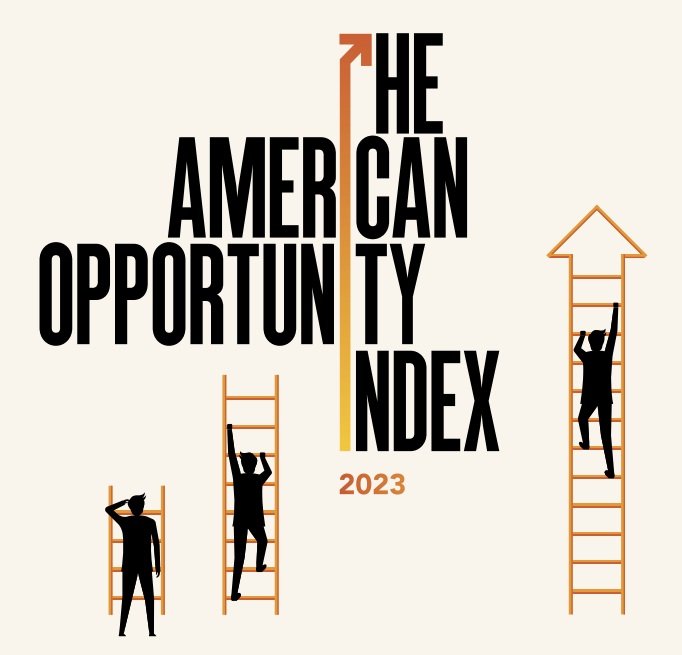Research
Selected research published by the Burning Glass Institute independently or in partnership with other leading workforce innovation and higher education organizations

The 2023 American Opportunity Index
The 2023 American Opportunity Index—a partnership between the Burning Glass Institute, Harvard Business School’s Project on Managing the Future of Work, and the Schultz Family Foundation—follows the career trajectories of 4.72 million employees across 396 of America’s largest companies. Through this work, we have gained unprecedented visibility into the question at the heart of the economic mobility equation: how workers rise.
The Index represents a revolutionary departure from other job quality metrics, which typically focus on corporate policies and rely on self-reported data or surveys. Instead, we observe real-world outcomes directly, as gleaned from analysis of millions of career histories – drawn from how workers report changes at work history of social media platforms, online resumes, etc. – as well as comprehensive salary and job posting data. We believe job quality is best measured by what actual workers experience.
Our analysis focuses on workers who don’t necessarily hold college degrees – and therefore don’t have the assurance of mobility that a degree was long assumed to represent. In many respects, these workers are a bellwether for how likely the majority of Americans are to achieve economic progress. Through this analysis, we hope to widen a lens that often focuses on access to jobs, but loses sight of what happens once employees get in the door.

Untapped Potential: How new apprenticeship approaches will increase access to economic opportunity
Economic shifts in the wake of the pandemic have left many US industries scrambling for talent. Despite the possibility of a recession, there are still about 50% more jobs than job seekers, and many experts predict that even in a sluggish economy, the labor market will remain tight. At the same time, three quarters of US workers have jobs that offer neither the prospect of better pay nor concrete opportunities for advancement.
For employers struggling to find the talent they need and for workers whose careers are stalled, apprenticeships offer a powerful solution. Apprenticeship isn’t just a critical new avenue for broadening the talent base. It’s also an important tool for diversifying talent pipelines. Individuals from low-income backgrounds and communities of color – who tend to be underrepresented among college graduates – are often overrepresented in lower-wage fields with few viable career pathways to quality jobs and careers. By pulling employees up from within, employers can both close their skills gaps, and leave behind the zero-sum game of wrestling one another for candidates. Instead, they can actually grow the pie, increasing the number of qualified workers for sought-after jobs. The resulting increased racial and gender diversity in higher-paying jobs helps employers meet inclusion objectives and advances equity across the economy.

The American Opportunity Index
The American Opportunity Index: A Corporate Scorecard of Worker Advancement is a new effort to give companies and other stakeholders a set of robust tools that measure how well major employers are doing in fostering economic mobility for workers and how they could do better. The Index is a joint project of the Burning Glass Institute, Harvard Business School’s Project on Managing the Future of Work, and the Schultz Family Foundation. The Index assesses America’s 250 largest public companies based on real-world outcomes of their employees in roles open to non-college graduates—not merely their statements on corporate policy. It draws upon a new source of insight: bigdata analysis of career histories, job postings, and salary sources of more than 3 million workers at those firms.
